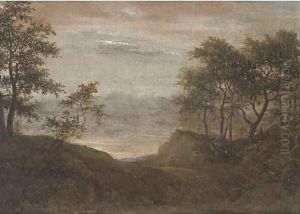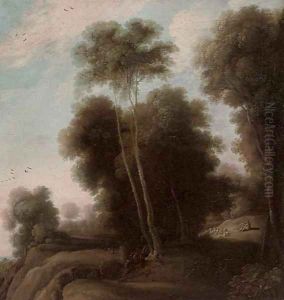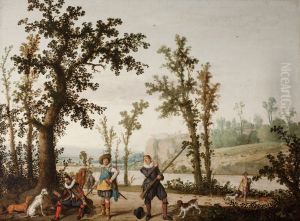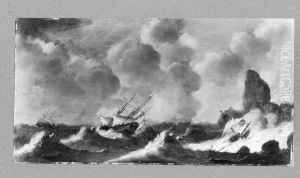Cornelis Vroom Paintings
Cornelis Vroom, born in Haarlem in 1591, was a pioneering Dutch Golden Age painter known for his significant contributions to landscape and marine painting. His early life was steeped in the rich artistic tradition of Haarlem, where he was born into a family with artistic ties—his father, Hendrick Cornelisz Vroom, was a notable painter of sea battles and marine scenes, which undoubtedly influenced Cornelis's future path.
Vroom's artistic journey was marked by a formative period in Italy, where he traveled in his early years. This trip was crucial for his development, allowing him to absorb the Italianate landscape style, which he later adapted and merged with the Dutch landscape tradition. Upon his return to the Netherlands, he settled in Haarlem, where he became an influential figure in the city's vibrant artistic community.
Throughout his career, Cornelis Vroom distinguished himself by developing a distinctive style that combined the detailed realism of Dutch painting with the atmospheric qualities of the Italian landscape. His works often depicted forest scenes, dunes, and seascapes, filled with a sense of depth and vastness yet attentive to the minutiae of nature. He was also known for his innovative use of light and shadow, which added a dramatic effect to his compositions.
Vroom's contributions to marine painting were particularly noteworthy. Following in his father's footsteps, he brought new perspectives to the genre, focusing not just on the grandeur of sea battles but also on the tranquility of maritime life and the perilous beauty of the sea. His maritime paintings are characterized by their dynamic compositions, detailed ships, and atmospheric effects, capturing the ever-changing moods of the sea.
Despite his achievements, Cornelis Vroom's work was somewhat overshadowed by the later successes of his contemporaries in the Dutch Golden Age. However, his legacy lived on through his influence on the next generation of landscape and marine painters. Cornelis Vroom passed away in Haarlem in 1661, leaving behind a body of work that continues to be appreciated for its innovative approach to landscape and marine painting. His paintings can be found in various museums and collections, where they stand as testament to his role as a pioneer of the Dutch Golden Age of painting.



